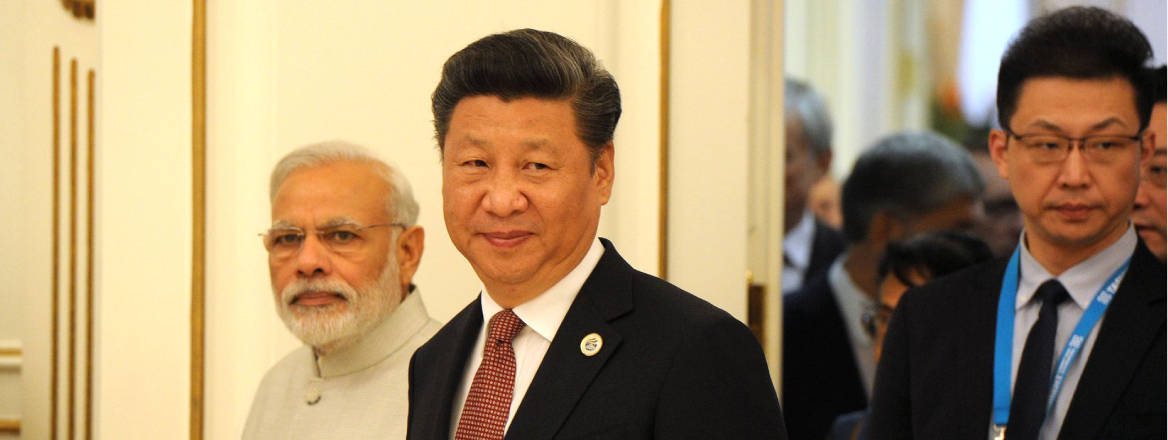Doklam Plateau: A Challenge to China’s Great Power Ambitions?
Will China's face off with India over the Doklam Plateau put a dent in Beijing's bid to be seen as a responsible world power?
A famous Chinese saying suggests that ‘One mountain cannot contain two tigers’ (Yī shān bù róng èr hǔ), and this logic often seems to be true when contrasted with China’s quest to occupy strategic space in Asia.
Stripped of all its niceties, China’s ambitions lie in strengthening its regional supremacy by dislodging US influence in Asia and, in doing so, Beijing takes incremental steps and resorts to salami-slicing tactics.
This is evident in China’s assertive muscle-flexing to control the South China Sea under the ambit of its ‘Nine-Dash Line’, in its unilateral establishment of an Air Defence Identification Zone in the East China Sea against Japan and in its recent expansion at Doklam at the India–China–Bhutan tri-junction.
What triggered the row was China’s unilateral construction of a road through the disputed Doklam plateau, a move strongly resisted by New Delhi. India’s retaliation came in response to New Delhi’s ‘Chicken-neck’ dilemma in the Siliguri Corridor.
China’s road build up was a perceived threat to choke India via the Chicken’s neck. What backfired is Beijing’s perception of a submissive India, putting China in a complicated and international volatile situation, where a step forward leads to an escalation, while a step back results into a loss of face.
China’s great power ambitions fit badly with Beijing’s claims that it is acting as a responsible player on the world stage; they indicate a reckless risk-taking approach, and raise serious concerns over Beijing’s great power ambitions.
The Doklam stand-off has raised significant questions about China’s responsible attitude, both internationally and domestically.
At the international level, China’s position is at stake, given the BRICS Summit in Xiamen next week at which Chinese President Xi Jinping will have to act as host to, among others, Indian Prime Minister Narendra Modi.
What backfired is Beijing’s perception of a submissive India, putting China in a complicated and international volatile situatio
China’s BRICS vision is, ostensibly, to promote the theme ‘Stronger Partnership for a Brighter Future’, something which clearly runs contrary to its militarily assertive behaviour at Doklam.
In this regard, the imminent challenge for China lies in India’s reluctance to participate in the BRICS Summit; any Indian absence will be a serious blow to China’s reputation, not to speak of its supposedly ‘strong partnership’ agenda.
An Indian no-show will also be interpreted as a broader opposition to Beijing’s One Belt, One Road Initiative, a centrepiece of current Chinese policy.
What has further jolted China’s gambit is the international support which India enjoys for its stance. For China’s moves at Doklam have bolstered India–US strategic ties. US President Donald Trump in his ‘Strategy towards Afghanistan and South Asia’ address earlier this month, he specifically mentioned America’s interest to ‘further develop its strategic partnership with India’. He also committed the US to pursuing ‘shared objectives for peace and security in South Asia and the broader Indo-Pacific region’.
This statement stresses the importance attached by the US to India in acting as a strong regional player to counter China’s growing regional ambitions.
Second, Japan is also backing India on Doklam. Justifying India’s stand, Japanese Ambassador to Delhi Kenji Hiramatsu remarked that ‘all parties involved should not resort to unilateral attempts to change the status quo by force’.
Any sign of compromise will be a blow for Xi’s China Dream of ‘great rejuvenation’ given his recent affirmation that the People’s Liberation Army ‘has the confidence and capability to defeat any intruder’
Beijing reacted, saying: ‘In Doklam, there is no territorial dispute. The boundary has been delimited and recognised by both sides’, adding that ‘[t]he attempt to change the status quo illegally is by India, not China’.
To be sure, Tokyo’s support should be seen in the broader perspective of Japan’s own security concerns and territorial disputes with China. Still, the growing bonds between Japan and India go beyond that, to shared perspectives on how to maintain international security.
US and Japanese support for India poses significant limits on China’s regional ambitions, meaning that Chinese calculations over Doklam could be wrong. It has elevated India’s standing as a regional and global power, positioning it as a strong counter force to China.
In addition, Doklam also factors domestically for China, for it acts a litmus test for Xi who is seeking to consolidate his power in the run-up to the 19th Party Congress later this autumn. It tests Xi’s credibility to act strong in safeguarding China’s interests.
Given this quandary, the biggest challenge for China lies in coping with the situation without hindering its much touted ‘responsible’ image
Any sign of compromise will be a blow for Xi’s China Dream of ‘great rejuvenation’ given his recent affirmation that the People’s Liberation Army ‘has the confidence and capability to defeat any intruder’.
Given this quandary, the biggest challenge for China lies in coping with the situation without hindering its much touted ‘responsible’ image. To save its image, China wants India to back down by withdrawing its troops first. However, India shows no signs of backing down, given the fact that its own standing and reputation are at stake.
So, a military muscle-flexing at Doklam seems to be the new status quo between India and China. And no smooth ‘peaceful rise’ for China.
Amrita Jash is Editor-in-Chief at IndraStra Global, New York. She pursued a PhD in Chinese Studies from the Centre for East Asian Studies, School of International Studies, Jawaharlal Nehru University, New Delhi-India, and can be contacted at: @amritajash or www.amritajash.in.
The views expressed in this Commentary are those of the author, and do not reflect those of RUSI or any other institution.

